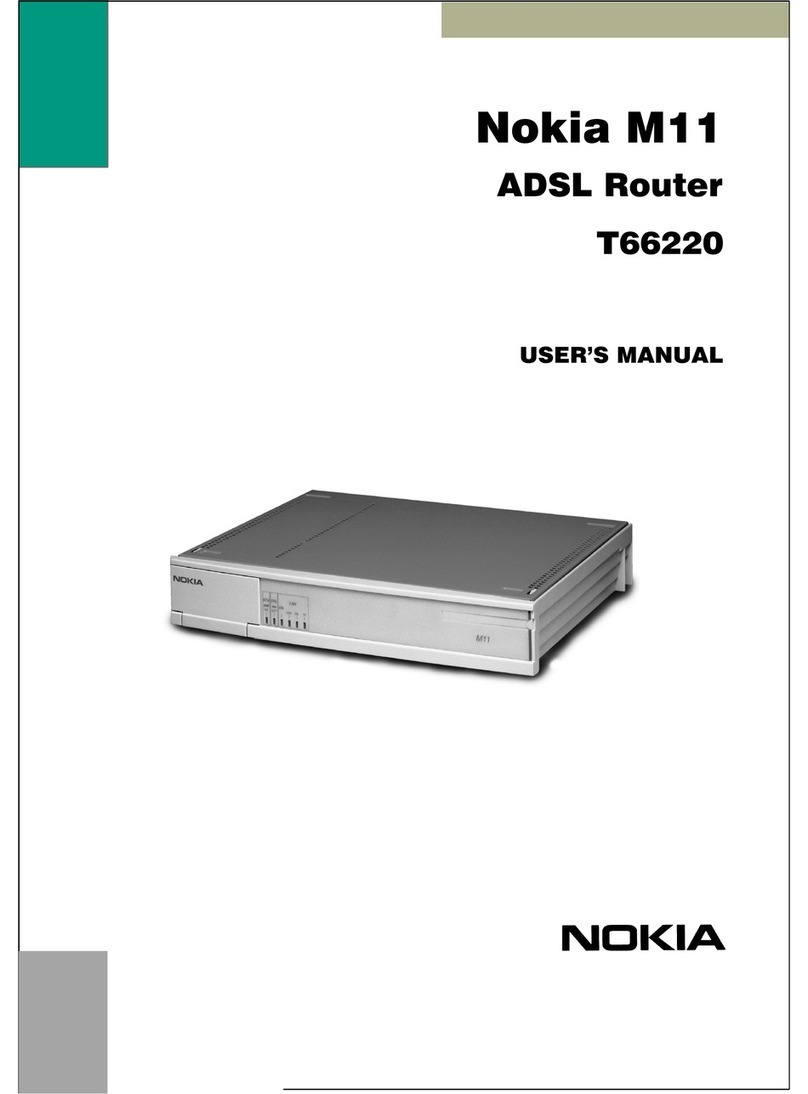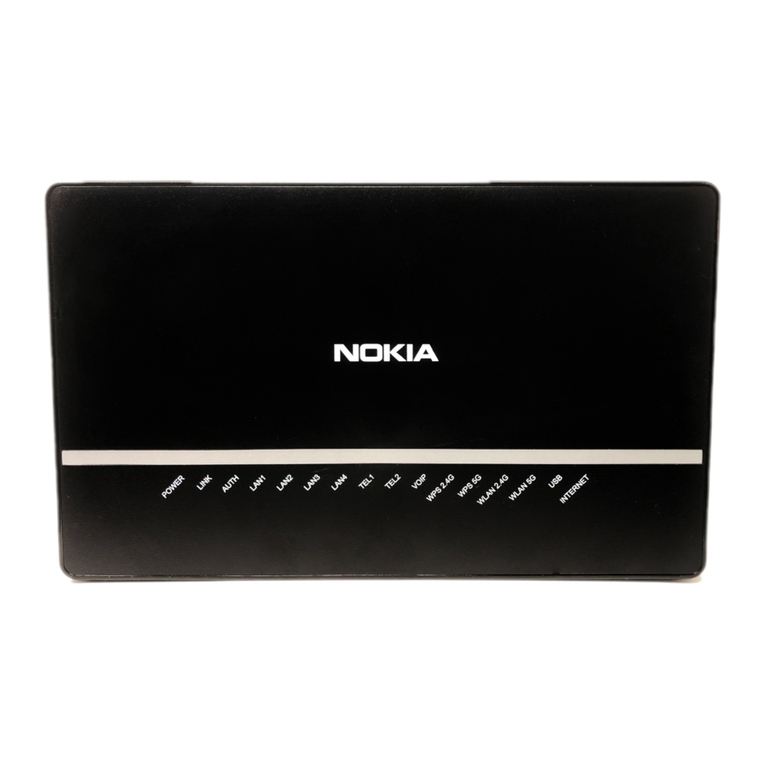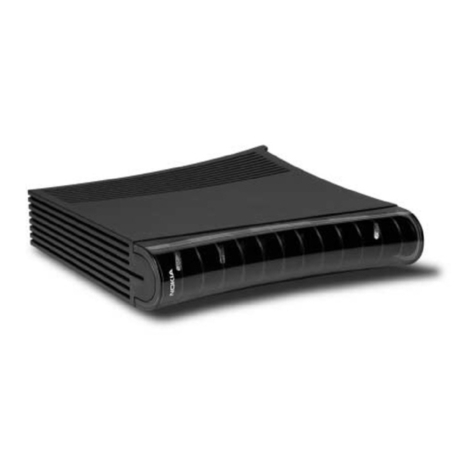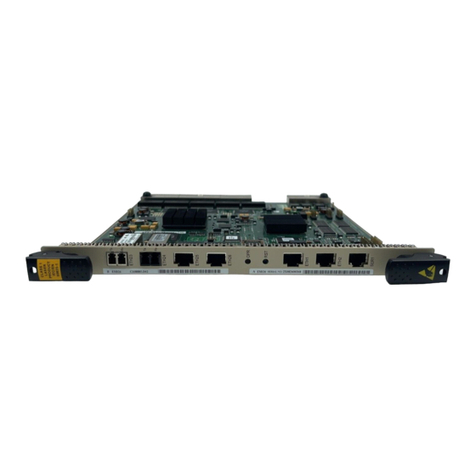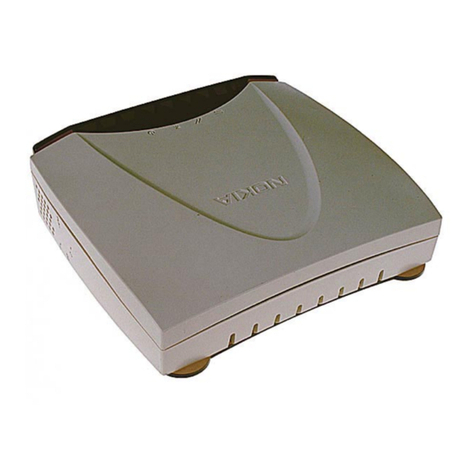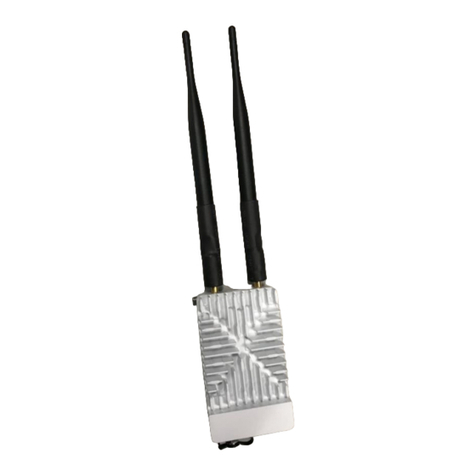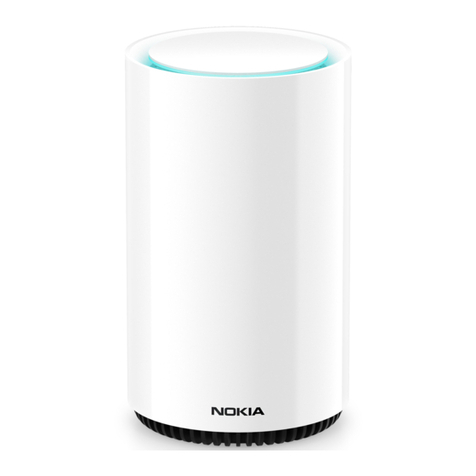DRAFT
Copyright Nokia Telecommunications Oy
NTC C33539002SE_A0 vii
PAP and CHAP Setup settings 5-5. . . . . . . . . . . . . . . . . . . . .
PPP Connection Manager settings 5-5. . . . . . . . . . . . . . . . . .
5.1.3 Router page 5-7. . . . . . . . . . . . . . . . . . . . . . . . . . . . . . . . . . . . .
Entering router settings 5-8. . . . . . . . . . . . . . . . . . . . . . . . . .
5.1.4 Bridge page 5-11. . . . . . . . . . . . . . . . . . . . . . . . . . . . . . . . . . . . .
Entering bridge settings 5-11. . . . . . . . . . . . . . . . . . . . . . . . . .
5.1.5 ATM page 5-12. . . . . . . . . . . . . . . . . . . . . . . . . . . . . . . . . . . . . .
Entering ATM settings 5-12. . . . . . . . . . . . . . . . . . . . . . . . . . .
Configuring ATM channels 5-13. . . . . . . . . . . . . . . . . . . . . . .
PPP over ATM (VC-muxed) 5-13. . . . . . . . . . . . . . . . . . . .
Other encapsulations 5-15. . . . . . . . . . . . . . . . . . . . . . . . . .
5.1.6 NAT pinhole page 5-17. . . . . . . . . . . . . . . . . . . . . . . . . . . . . . . .
Pinhole configuration example 5-17. . . . . . . . . . . . . . . . . . . .
5.1.7 SNMP page 5-19. . . . . . . . . . . . . . . . . . . . . . . . . . . . . . . . . . . . .
Entering SNMP settings 5-19. . . . . . . . . . . . . . . . . . . . . . . . . .
5.1.8 Monitor page 5-20. . . . . . . . . . . . . . . . . . . . . . . . . . . . . . . . . . . .
5.2 Command line interface 5-21. . . . . . . . . . . . . . . . . . . . . . . . . .
5.2.1 Starting and ending a CLI session 5-21. . . . . . . . . . . . . . . . . . . .
Connecting from telnet 5-21. . . . . . . . . . . . . . . . . . . . . . . . . .
Connecting from the console port 5-21. . . . . . . . . . . . . . . . . .
Logging in 5-22. . . . . . . . . . . . . . . . . . . . . . . . . . . . . . . . . . . .
Entering commands in Nokia M10 CLI 5-22. . . . . . . . . . . . .
Ending a CLI session 5-24. . . . . . . . . . . . . . . . . . . . . . . . . . . .
Using the CLI help facility 5-24. . . . . . . . . . . . . . . . . . . . . . .
Saving settings 5-24. . . . . . . . . . . . . . . . . . . . . . . . . . . . . . . . .
5.2.2 The Root command hierarchy 5-24. . . . . . . . . . . . . . . . . . . . . . .
Root prompt 5-24. . . . . . . . . . . . . . . . . . . . . . . . . . . . . . . . . . .
Root command shortcuts 5-24. . . . . . . . . . . . . . . . . . . . . . . . .
Root commands 5-25. . . . . . . . . . . . . . . . . . . . . . . . . . . . . . . .
5.2.3 Config command hierarchy 5-40. . . . . . . . . . . . . . . . . . . . . . . . .
Config prompt 5-41. . . . . . . . . . . . . . . . . . . . . . . . . . . . . . . . .
Navigating the Config hierarchy 5-41. . . . . . . . . . . . . . . . . . .
Displaying current settings 5-43. . . . . . . . . . . . . . . . . . . . . . .
Stepping through M10 configuration 5-43. . . . . . . . . . . . . . . .
Validating your configuration 5-44. . . . . . . . . . . . . . . . . . . . .
Config command reference 5-44. . . . . . . . . . . . . . . . . . . . . . .
System settings 5-45. . . . . . . . . . . . . . . . . . . . . . . . . . . . . .
CLI preferences 5-47. . . . . . . . . . . . . . . . . . . . . . . . . . . . . .
ATM settings 5-48. . . . . . . . . . . . . . . . . . . . . . . . . . . . . . . .
TCP/IP settings 5-52. . . . . . . . . . . . . . . . . . . . . . . . . . . . . .
Static route settings 5-68. . . . . . . . . . . . . . . . . . . . . . . . . . .


